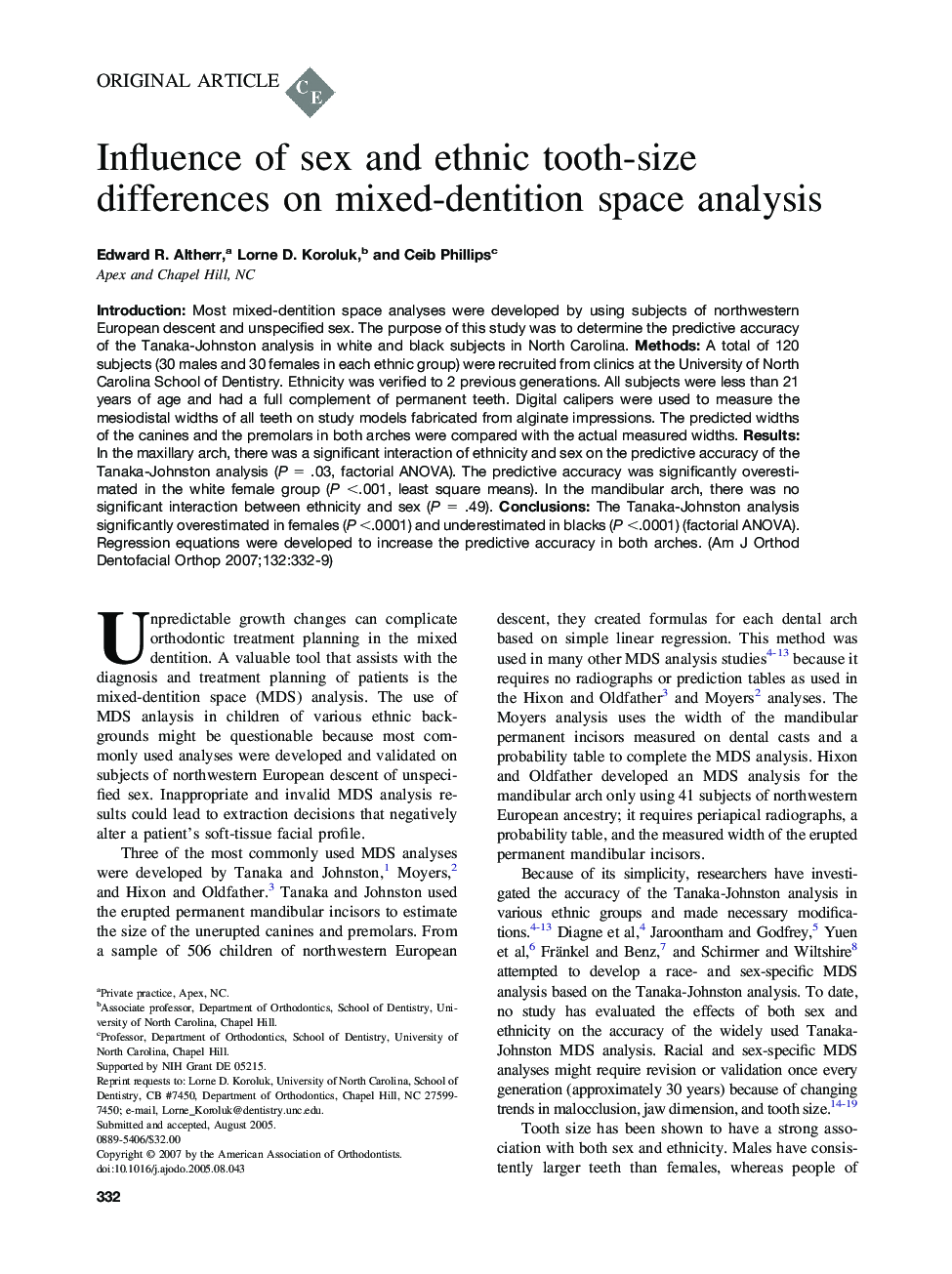| Article ID | Journal | Published Year | Pages | File Type |
|---|---|---|---|---|
| 3118929 | American Journal of Orthodontics and Dentofacial Orthopedics | 2007 | 8 Pages |
Introduction: Most mixed-dentition space analyses were developed by using subjects of northwestern European descent and unspecified sex. The purpose of this study was to determine the predictive accuracy of the Tanaka-Johnston analysis in white and black subjects in North Carolina. Methods: A total of 120 subjects (30 males and 30 females in each ethnic group) were recruited from clinics at the University of North Carolina School of Dentistry. Ethnicity was verified to 2 previous generations. All subjects were less than 21 years of age and had a full complement of permanent teeth. Digital calipers were used to measure the mesiodistal widths of all teeth on study models fabricated from alginate impressions. The predicted widths of the canines and the premolars in both arches were compared with the actual measured widths. Results: In the maxillary arch, there was a significant interaction of ethnicity and sex on the predictive accuracy of the Tanaka-Johnston analysis (P = .03, factorial ANOVA). The predictive accuracy was significantly overestimated in the white female group (P <.001, least square means). In the mandibular arch, there was no significant interaction between ethnicity and sex (P = .49). Conclusions: The Tanaka-Johnston analysis significantly overestimated in females (P <.0001) and underestimated in blacks (P <.0001) (factorial ANOVA). Regression equations were developed to increase the predictive accuracy in both arches.
